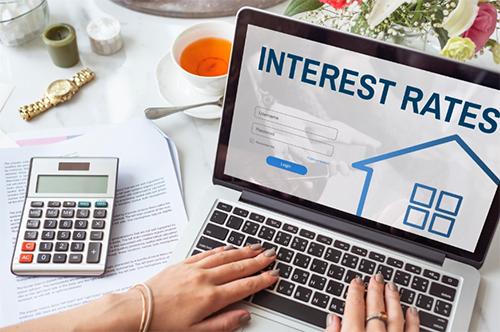Your Loan EMIs May Increase As RBI Hikes Repo Rate Once Again
Listen to Your Loan EMIs May Increase As RBI Hikes Repo Rate Once Again
00:00
00:00
In the Reserve Bank of India (RBI) Monetary Policy Committee (MPC) meeting in December 2022, RBI governor Shaktikanta Das announced a 35 basis point (bps) hike in the repo rate. This is the fifth consecutive hike by the central bank since May 2022, taking the total quantum of rate hikes to 225 bps. With this, the repo rate, at which the RBI lends money to commercial banks, now stands at 6.25%.
The central bank, in its Monetary Policy Statement, said that based on an assessment of the current and evolving macroeconomic situation, the MPC has decided to;
These decisions are in consonance with the objective of achieving the medium-term target for consumer price index (CPI) inflation of 4 per cent within a band of +/- 2 per cent while supporting growth.
RBI governor said, "India is seen as a bright spot in an otherwise gloomy global outlook, but global spillovers continue to impart volatility.".
What is the repo rate and how does the hike in repo rate affect the borrowers?
Repo stands for 'Repurchase Option' or 'Repurchase Agreement'. It is the interest rate at which the central bank lends money to commercial banks. When banks are short on funds or need to maintain liquidity under volatile market conditions, they borrow money from the central bank by selling the qualifying securities at a set price.
 Image source: www.freepik.com
Image source: www.freepik.com
Join Now: PersonalFN is now on Telegram. Join FREE Today to get 'Daily Wealth Letter' and Exclusive Updates on Mutual Funds
The RBI utilises the repo rate to restrict the flow of money in the market and tame inflation. When the market is impacted by inflation, the RBI hikes the repo rate. So, when the RBI hikes the repo rate, it increases the cost of borrowing funds for banks. Consequently, the cost is passed on to the retail borrowers by increasing the retail loan interest rates. This impedes banks from borrowing money from RBI. As a result, it reduces the money in the market, helping negate inflation.
Table 1: RBI's Monetory Actions in 2022
| Month |
Repo Rate |
Change in Repo Rate (bps) |
| May |
4.40% |
+40 |
| June |
4.90% |
+50 |
| August |
5.40% |
+50 |
| September |
5.90% |
+50 |
| December |
6.25% |
+50 |
Data as on 07 December 2022
(Source: RBI Monetory Policy Statements)
As discussed, an increase in the repo rate means an uptick in the cost of borrowing. The rise in the repo rate can affect the borrowers of floating interest rate loans, such as home loans and car loans, as these loans are linked to an external benchmark set by the RBI. Generally, most banks' and Non-Banking Financial Companies' (NBFCs) lending rates are linked to the repo rate fixed by the RBI. However, take note that the interest rates for fixed-interest rate loans, such as personal loans, remain the same throughout the loan tenure, irrespective of changes in the repo rate.
What can a borrower do now?
With an increase in the repo rate, the Repo Linked Lending Rate (RLLR) also increases. So, since your home loan and car loan EMIs are likely to increase with the recent hike in repo rate, here's what you can do to mitigate the impact:
-
In order to save the rising interest cost, you can use your surplus savings and opt for prepayment of your loans. While you may have a high unpaid loan amount, you can choose to pay as much as possible over and above your fixed EMI. The extra amount you pay goes towards your principal, ultimately reducing your interest cost.
-
If your loan repayment capacity has increased since the time you availed of the loan, you can request for change in your loan terms by either increasing the amount of your EMI or lowering your loan tenure.
-
If you are planning to buy another house or car, you can either choose to purchase it with a high rate of interest, or start investing with a solid financial plan that helps you generate an adequate corpus for your purchase. PersonalFN's SMART Fund Explorer can help you plan your mutual fund investments smartly. You can provide details pertaining to your goal, such as the type of goal (buying a home, retirement, etc.), no. of years you want to achieve your goal in, the amount required, and the lump sum or SIP investment amount you can contribute. We will provide you with two mutual funds investment options you can choose from, based on your risk appetite. While taking a loan allows you to possess the property immediately, buying it with a proper financial plan can save a substantial interest cost and give you peace of mind.
Warm Regards,
Ketki Jadhav
Content Writer